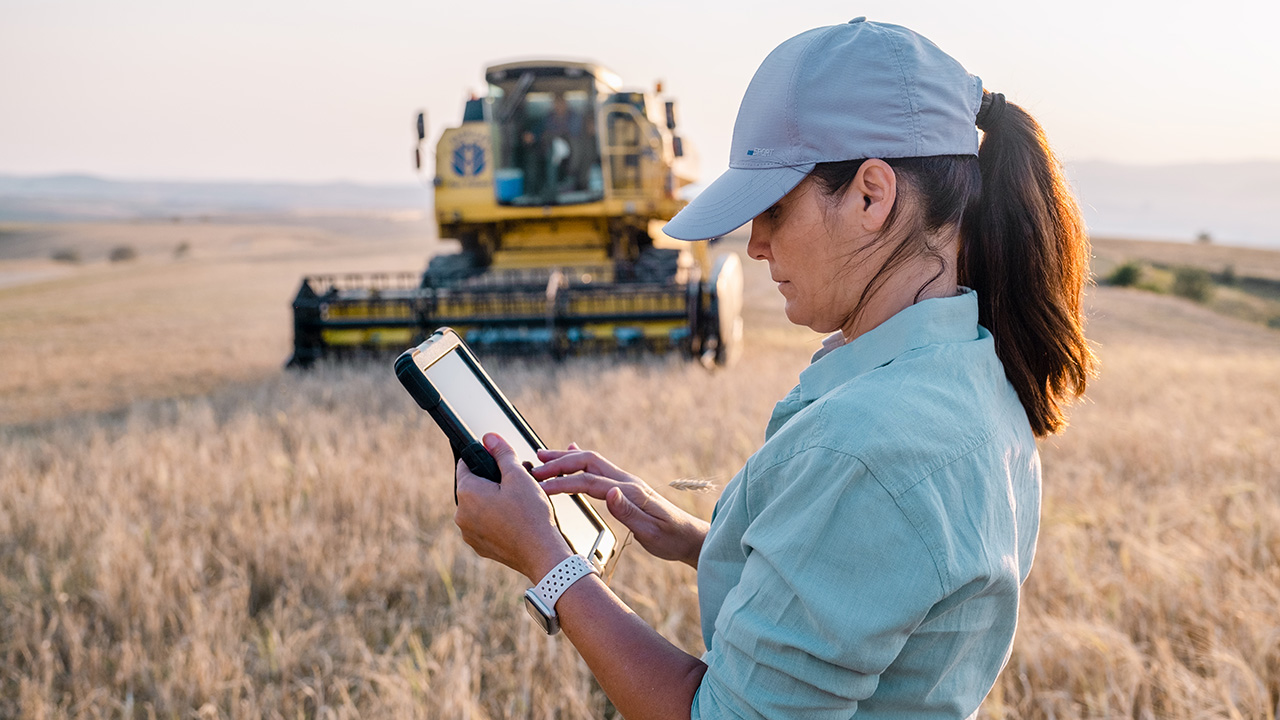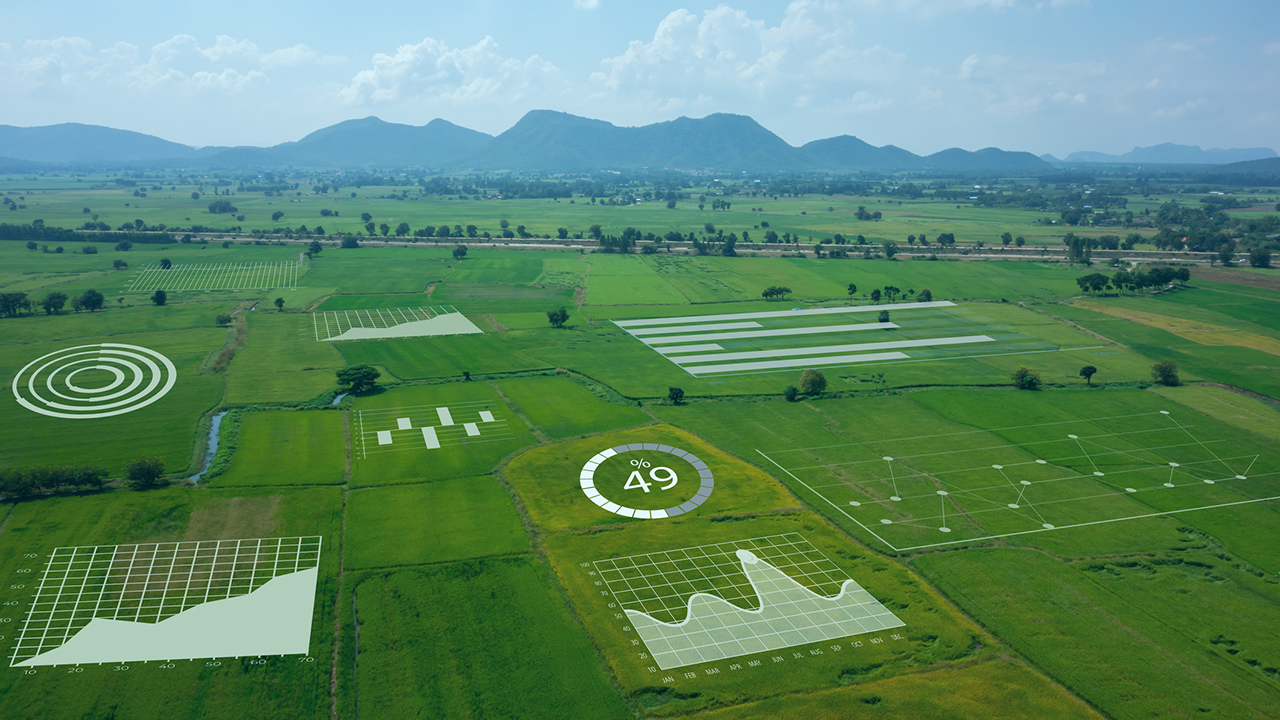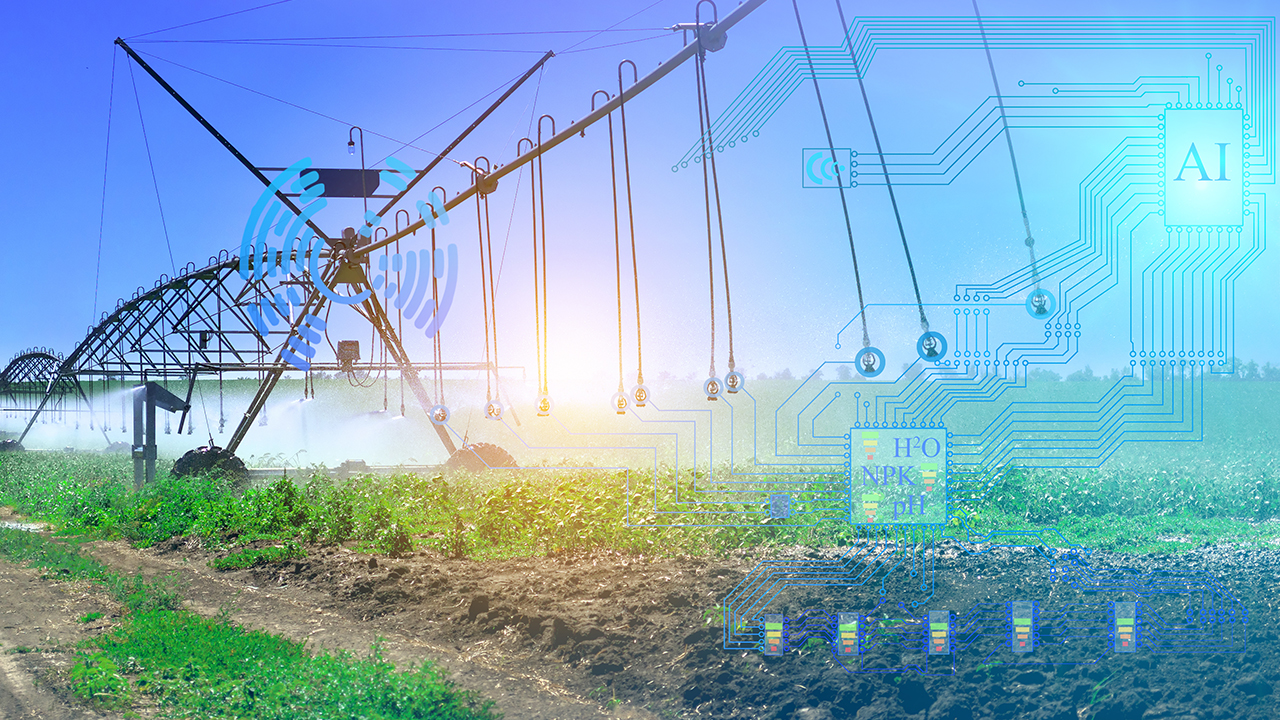When it comes to the ever-rising costs associated with farming, every dollar counts. It’s a similar story in agriculture sustainability: Everything farmers can do to improve sustainability can have a tremendous impact — for the farmer, for the consumer, and for the planet. One key IoT initiative: supporting carbon credits for farmers.
IoT technology can make significant contributions in the fight against climate change in many ways, including helping to quantify carbon credits. Today’s farmers increasingly use IoT to drive carbon efficiency and earn carbon credits to support sustainable farming. But how do connected devices help farmers track carbon credits and achieve their carbon targets?
In this blog we provide an explanation of carbon credits, how they work, and some examples of how IoT supports the monitoring and measurement in the agriculture industry.
Carbon Credits Explained: What Is a Carbon Credit?
Your first questions may be: What are carbon credits and how do carbon credits work?
Carbon credits are financial incentives offered to organizations like farming operations that adopt environmentally friendly practices to reduce or capture greenhouse gas emissions.
Each carbon credit equals one ton of CO2 that is removed from the atmosphere or prevented from entering the atmosphere. These carbon offset credits — from a range of sources including eco-centric projects, industrial operations, farming, and forestry — can collectively have an enormously positive impact on the environment.
And how does a farmer get carbon credits? This involves a process of identifying methods to reduce carbon or prevent it from entering the atmosphere and tracking the effectiveness of those projects.
Calculating the Carbon Footprint of the Farm

Here are five valuable tools that farmers can use to quantify their greenhouse gas emissions and carbon capture:
- COMET-Farm Tool: Developed by Colorado State University and the U.S. Department of Agriculture (USDA), COMET-Farm helps farmers and ranchers estimate the carbon sequestration and greenhouse gas emissions from their operations, including crop production, livestock, and on-farm energy use. This tool also assists in evaluating the benefits of various conservation practices.
- FAST-GHG Tool: Developed by Cornell University, FAST-GHG enables farmers to quantify greenhouse gas emissions specifically for crop production. It is used in partnership with Walmart's Project Gigaton to calculate and reduce emissions in supply chains. The tool focuses on practices like tilling and cover cropping, which can significantly impact soil health and carbon sequestration.
- DayCent Model: This model, part of the USDA's Conservation Reserve Program (CRP), simulates the movement of carbon and nitrogen through agricultural systems. It helps assess the environmental benefits of different farming practices and the potential for carbon sequestration.
- GHG Protocol Agricultural Guidance: Provided by the Greenhouse Gas Protocol, this guidance helps agricultural entities calculate their greenhouse gas emissions. It offers a structured approach to develop emission inventories that are comprehensive and reliable, critical for informed management and reduction strategies.
- Cool Farm Tool: This online calculator enables farmers to measure the carbon footprint of their agricultural activities and provides options for reducing their emissions. The tool is versatile, covering a variety of crops and livestock, and is used internationally to drive improvements in agricultural practices.

The Benefits of a Carbon Credit Program
The carbon credit paradigm incentivizes these initiatives by identifying and documenting each carbon offset, leading to incremental revenue.
Start with a baseline of your typical or average emissions. Then measure your subsequent reductions (achieved through agroforestry, cover cropping, no-till farming, rotational grazing, or similar practices) and turn them into carbon credits.
Farmers can turn to a carbon credit market to sell these carbon credits to entities that want to offset their own carbon emissions. This helps the farmer monetize their sustainable farming practices through a carbon credit market. In other words, carbon credits for farmers can promote an eco-friendly agricultural sector while also providing farmers with several benefits:
- Additional income: Carbon credits provide an additional source of income for farmers, helping them maintain their livelihoods while adopting more sustainable practices.
- Incentives for sustainable practices: Carbon credits provide a financial incentive for farmers to adopt environmentally friendly practices, such as agroforestry, peatland restoration, and nutrient management, all of which are good for the planet. Farmers who participate in a carbon credit market access better financial incentives from banks or investors, which help them invest further in more sustainable farming practices.
- Improved soil health: Practices such as no-till farming and cover cropping can enhance soil health and mitigate climate change by storing carbon in the soil. Enhanced soil health also improves farming outcomes.
Agriculture is a significant contributor to greenhouse gas emissions. By adopting sustainable farming practices and generating carbon offset credits, farmers can play a crucial role in mitigating climate change.
How Does the Farming Carbon Credit Market Work?
The U.S. government’s Growing Climate Solutions Act of 2021 empowers the U.S. Department of Agriculture (USDA) to help farmers participate in carbon credit markets.
This aims to develop a voluntary market for carbon credit for farmers. Those carbon credits come from reducing GHG emissions or sequestering carbon on farms and in forested areas.
What’s the potential for carbon capture credits? For instance, foresters might want to determine how many carbon credits per acre of trees they can generate. An IHS Markit analysis suggested that the potential annual demand for agriculture carbon credits in the U.S. is 190 million tons — that’s a $5.2 billion market. Companies such as General Mills and McDonald’s support carbon credits and are eager to promote regenerative farming practices — and their corresponding carbon credit markets — across North America.
In Europe, there's an emphasis on regenerative farming to lower GHG emissions. Soil and agriculture are integral to the EU’s “Fit for 55” initiative. The EU aims to reduce 42 million tons of CO2 by 2030 through carbon credits for farmers, but guidelines and frameworks are still in development.
That said, voluntary carbon credit markets have emerged, like the Dutch startup Agreena, which supports EU farmers in regenerative agriculture and farming carbon credits.

IoT Devices to Monitor Farmers’ Efforts and Capture Carbon Credits
Though there are plenty of ways for farmers to pursue carbon capture credits, a lack of clear and easy verification can pose challenges. How do farmers prove they are using green practices?
That’s where the IoT bridges the gap between skepticism about carbon credits for farmers, and the actual value and effectiveness of carbon offset credits. IoT solutions offer farmers accuracy, reliability, and scalability to collect needed data to verify and document their claims for carbon credits.
Today, IoT-equipped sensors and devices can document a reduction in water usage, monitor the carbon emissions involved in livestock and crop management, and more. The IoT also plays a role in sustainable practices. For instance, field-deployed devices can automate processes and send data on things like tank levels and soil conditions. That means fewer fuel-burning vehicles must traverse acres (or square miles) of land to gather data. Modern farming also uses IoT connectivity for self-driving tractors, harvesting robots, and monitor weather metrics and forecasts that can impact planting, fertilizing, and irrigation schedules.
Digi Connectivity Solutions — A Crucial Link for Farming Carbon Credits

But how is key data for carbon credit for farmers collected when devices are distributed across many square miles? It starts with a portfolio of IoT devices, ranging from simple sensors for livestock monitoring to complex systems like environmental management tools. The crucial link for farming carbon credits is connectivity using the cellular devices, RF radios, cloud transmissions, and more.
This connectivity is essential to enable IoT devices to communicate and share data. Some of the key connectivity devices include:
- Wireless system-on-modules (SOMs) and radio modules: Digi provides wireless system-on-modules and radio modules that can be integrated into IoT devices, enabling wireless communication and data transmission.
- IoT gateways: Digi's IoT gateways like Digi XBee® Industrial Gateway and Digi Connect® Sensor XRT-M connect sensors across the farm with remote cloud data centers, for fast and reliable data transmission.
- Industrial cellular routers: Digi offers ruggedized cellular routers for demanding IoT agriculture applications, ensuring reliable and secure communication in harsh environments.
Remote Monitoring and Management with Digi Remote Manager®
Our remote device management platform allows users to monitor and manage device networks of any size, providing notifications for out-of-parameter events and conditions as well as security monitoring, alerts and remote firmware updates. Acting as a command center for distributed networks, Digi Remote Manager provides the in-depth insights and remote management capabilities that organizations need for compliance, reporting, and a "single pane of glass" view into their networks.

Farmers can use these advanced IoT systems to create a robust and reliable device network that enables seamless communication, real-time data sharing, and remote management. In doing so, they can improve crop yield, reduce costs, enhance precision and efficiency, and obtain the data needed to substantiate claims for carbon credits.
IoT Enhances Farming
Smart connectivity gives IoT devices greater value in many other farming applications. In addition to carbon credits for farmers, the IoT is improving operations across the farm:
- Smart greenhouses: IoT devices can intelligently monitor and control greenhouses, eliminating manual intervention for things like turning on lights, adjusting temperatures, or opening windows.
- Livestock monitoring: IoT applications help track the location, health, and well-being of cattle and identify sick animals to prevent disease spread and reduce labor costs.
- Monitoring climate: IoT sensors add can provide real-time weather conditions, information that is crucial for optimizing crop production and minimizing irrigation and fertilizing costs.
- Sensor cameras: These networked devices produce images that undergo digital image processing for automated decision-making for quality control, sorting, and grading.
Digi’s Powerful Connectivity for Agriculture in Action
The following case studies demonstrate how IoT technology supports precision farming, as well as the measuring and monitoring of remote processes for data insights. Additionally, these and other Digi case studies in agriculture show how precision agriculture practices help to reduce carbon emissions.
Jain Irrigation Inc., a global leader in precision agriculture and irrigation technology, helps address worldwide food and water shortages, serving more than 8 million farmers in 120 countries. Jain uses IoT devices, AI, and machine learning, combined with satellite imagery, weather forecasts, and soil data to make precise irrigation decisions that support sustainable farming. Sensors capture environmental data such as temperature, humidity, soil moisture, and wind speeds. Jain’s solutions rely on Digi XBee® 3 Cellular modems to transmit data to the cloud. By aggregating and analyzing that data, Jain customers conserve water, maximize yields, and reduce labor and energy costs. Jain Irrigation won the 2022 Digi Green Tech Award in Smart Agriculture.
Dynamax, a global leader in plant monitoring instrumentation, helps farming operations to identify the precise amount of water crops need — enabling farmers to carefully manage water resources. By carefully monitoring sap flow, and the movement of water through the plant, from the soil to the roots to the leaves, the company can determine the exact amount of water needed for optimal crop health and yield. Their measurement devices use a Digi XBee® SX 900 MHz RF module that transmits data at 900 MHz to a Digi XBee gateway. And all of the deployed devices and networks are centrally monitored using Digi Remote Manager®, a cloud-based platform that facilitates easy setup, mass configuration, maintenance and support for hundreds or even thousands of remote Digi devices. Dynamax won the 2023 Digi Green Tech Award in Smart Agriculture.
Valmont Industries, Inc. provides a wide range of services and solutions to support the agriculture industry in improving productivity. A world leader in agriculture and irrigation solutions, Valmont has demonstrated a commitment to conserving resources while driving innovation through technology. The company integrates Digi technology, including industrial cellular routers, Digi XBee Cellular modems and Digi XBee RF modules, into a range of solutions, including smart irrigation systems, to help modern farms deploy remote sensors, cameras, and wireless networks for greater efficiency in the fields. Valmont won the 2022 Digi Green Tech Award for Smart Infrastructure, and the 2024 Digi Green Tech Award for Smart Irrigation.
These are just a few examples showcasing how Digi solutions support the farming community in measuring and monitoring their crops, livestock, equipment, and processes to preserve resources and lower their carbon footprint.
Want to learn more? Check out these resources:
IoT Increases Reliability in Carbon Credits
The carbon credit market's growth and the sustainability of farming carbon credits are contingent on trust. With no proof, it’s hard to ascertain whether carbon credit claims are valid. Connected IoT devices help provide the evidence of carbon suppression and sequestration, enabling farmers to present concrete gains to the entities that issue carbon credits.
But the IoT plays another crucial role: enabling precision agriculture. This precise approach minimizes waste, conserves resources, and reduces harmful environmental runoffs. By automating operations, streamlining processes, and enabling data-driven decisions, the IoT reduces the overall carbon footprint of farming operations and contributes to a more sustainable future.
Farmers who maximize the use of connected devices in their agriculture practices stand to gain by winning valuable carbon credits — and by supporting a healthier planet.
IoT and Carbon Credits for Farmers FAQ
What are carbon credits in the context of farming?
Carbon credits represent the reduction, sequestration or avoidance of greenhouse gas (GHG) emissions—commonly measured in metric tons of CO₂-equivalent—that can be sold or traded. In agriculture, farmers earn credits by adopting practices that reduce emissions or enhance carbon capture (for example, by no-till farming, cover cropping, agroforestry or improved nutrient management).
How can IoT technology help farmers participate in carbon credit programs?
IoT devices and networks allow farmers to collect accurate, continuous data about their fields, soils, water use, emissions, crop and livestock behavior, and equipment operations. This data is essential for verifying and documenting the environmental benefit required by carbon-credit programs. For example:
- Soil-moisture and nutrient sensors support reduced fertilizer or water use, which lowers emissions
- Remote monitoring reduces the need for travel (equipment, field visits), thereby reducing fuel usage and associated emissions
- Data enables measurement of baseline emissions and monitoring of change over time (critical for validating carbon credit claims
What benefits do farmers gain from leveraging IoT for carbon credits?
- Additional income stream: By generating verifiable carbon-credits, farmers can monetize sustainable practices
- Improved resource efficiency: The same IoT systems that help monitor carbon-impact typically also support savings in water, fuel or fertilizer
- Better sustainability credentials: Which can lead to market advantages, improved financing/investor access, or meeting buyer demands for sustainable sourcing
What are the major challenges farmers face when using IoT for carbon credit generation?
- Data reliability and verification: Carbon-credit programs require consistent, verified data; IoT deployments must ensure accuracy, integrity and traceability
- Connectivity in remote or rural areas: Many farms are in locations with limited network infrastructure, so deploying IoT successfully can be more difficult
- Upfront costs and complexity: Sensors, connectivity, analytics and certification can incur investment, which must be justified by the expected credit value
- Market and regulatory uncertainty: Carbon-credit schemes still vary by region, and standards for agricultural credits are evolving
What steps should a farmer take to begin using IoT for carbon-credit participation?
- Establish a baseline: Measure current emissions or carbon-sequestration levels (soil carbon, input use, fuel/travel)
- Deploy IoT sensors/devices: Install connectivity, soil sensors, water-use monitors, equipment telematics or other relevant devices to track change
- Select sustainable practices: Adopt practices with measurable carbon-impact (e.g., cover cropping, no-till, precision irrigation)
- Collect, manage and verify data: Use the IoT-systems to log data over time, then interface with the carbon-credit program’s measurement/verification process
- Explore carbon-markets and program enrollment: Identify certified programs or registries, understand requirements, and register credits once validated
Why is IoT increasingly considered “the bridge” between farming practices and credible carbon-credit markets?
Because carbon-credit programs require demonstrable evidence of emissions reduction or sequestration—not just promise of good intention—IoT provides the measurement, transparency, and scale needed to make those claims credible. Without reliable data, many agricultural carbon-credit projects can struggle to validate the outcomes.
Next Steps